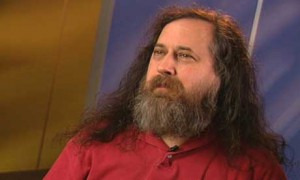
UPDATE 2 Dec 2012: Wright update, Steele update, at end of original post.
As received: On the Linkedin Group, “Intelligence and Security”, a member started a discussion on open source intelligence using a quote from your [forthcoming chapter], “The Craft of Intelligence.” Davidson (a self proclaimed “former CIA Senior Intelligence Officer”) made such a wildly ignorant comment about you and open sources intelligence that I felt a response was in order.
NB: Open Source Intelligence (OSINT) is an umbrella term that encompasses Open Source Information (OSIF), Open Source Decision-Support (OSINT), and Validated OSINT (OSINT-V), the latter being the province of all-source analysts alone. Most OSINT is created by people who are not US citizens, do not have US clearances, and are completely invisible to the US secret world.

Click for Biography
Michael R. Davidson • I just downloaded it. Steele has been around for a long time propounding the virtues of OSINT, something he learned about originally at CIA. In my view, his document has more to do with justifying Wikileaks than with what we might think of as intelligence. Perhaps that's too harsh. What he's really talking about already exists. It's called the media.
His quote of Steele from “The Craft of Intelligence” (version 3.1, 3.2 is latest), is in fact the opening sentence, conveniently dropping the four referencfes (Davis 1986, Garland 2012, Pillar 2011, Treverton 1986):
There is little desire in the developed intelligence nations to see the craft of intelligence evolve in line with the revolutions in information technology and globalization. Indeed, it can safely be said that most leaders with access to intelligence services do not value them—they are much more influenced by networks of influence and ideology that demand the status quo. Where intelligence is used at all it is generally to confirm pre-existing policy positions rather than what governing elites need to know.
Here is the complete opening of this seminal chapter that was commissioned specifically to Steele for the forthcoming in Robert Dover, Michael Goodman, and Claudia Hillebrand (eds.). Routledge Companion to Intelligence Studies (Oxford, UK: Routledge, 31 July 2013), strongly recommended to all as one of the first full-spectrum 21st century collections for the professional (both practitioner and scholar).
There is little desire in the developed intelligence nations to see the craft of intelligence evolve in line with the revolutions in information technology and globalization. Indeed, it can safely be said that most leaders with access to intelligence services do not value them—they are much more influenced by networks of influence and ideology that demand the status quo. Where intelligence is used at all it is generally to confirm pre-existing policy positions rather than what governing elites need to know. (Davis 1986, Garland 2012, Pillar 2011, Treverton 1986).
Ada Bozeman has written: (There is a need) to recognize that just as the essence of knowledge is not as split up into academic disciplines as it is in our academic universe, so can intelligence not be set apart from statecraft and society, or subdivided into elements…such as analysis and estimates, counterintelligence, clandestine collection, covert action, and so forth. Rather … intelligence is a scheme of things entire. (Bozeman 1998: 177):[1]
What can be observed within both the closed intelligence communities and open academic, civil society, commerce, government at all levels, law enforcement, media, military, and non-governmental/non-profit (hereafter the “eight communities”) is a failure to comprehend the shift in the nature and reliability of their unwittingly shared sources and methods; the Earth (reality), and the mix of humanity, culture and technology.
Intelligence—the art of forecasting, warning, and holistic evaluation of cause and effect—has generally focused in the past on the identification and evaluation of grave threats and in supporting the judgment of executive agencies and political leaders with respect to those threats (Iraq and Afghanistan are two such recent incidents, and Iran is likely to become the next incident of its type).
Since 1988 I have sought to generate a paradigmatic shift in the understanding of intelligence so as to refocus it on holistic analytics and opportunities as well as the expansion of the craft of intelligence to embrace all human minds, all information in all languages, all the time. This approach – which treats the social world as an ecology – is the only one capable to dealing with the complexity present in a fluid international system typified by revolutions in the production and dissemination of knowledge, and in the character and dynamics of social relations as well as all attendant technologies.
The secret intelligence community (and the accompanying political apparatus) as one of the eight information-processing communities is – as a result of the failure to understand and adapt to these changes – so isolated that on its own terms it has become an irrelevance. More worryingly, it has become an expensive and unethical irrelevance that is undermining the craft of intelligence as a whole. I wish to restore the relevance of what I term the secret world—in the USA it now provides less than 4% of what national-level leaders need—but only in the context of a renaissance of intelligence that creates a Smart Nation and a World Brain focused on creating a prosperous world at peace by eradicating corruption, fraud, waste, and abuse. [2]
Intelligence should be an inherent responsibility of and benefit for all citizens, not just of leaders—80% of whom do not get intelligence support now.[3] We must migrate from secrets for the few to public intelligence for all.
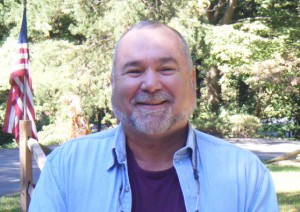
Click on Image for Bio Page
ROBERT STEELE: Let's begin with the obvious: the opening sentence, while out of context, has nothing to do with OSINT and everything to do with the refusal of policy makers to be serious about demanding and integrating intelligence — decision-support from all possible sources both secret and open — into their deliberations. Paul Pillar has documented this better than anyone I know, in his recent book, Intelligence and U.S. Foreign Policy: Iraq, 9/11, and Misguided Reform (Columbia University Press, 2011). My summary review of Paul's work is the first review visible on the book's Amazon page. That is the discussion one would think Mr. Davidson intended to pursue. Right now the secret world is a minor pork trough for Congress, nothing more.
Next up is his claim that I learned about OSINT at CIA. That not correct. My experience at CIA was in three back-to-back clandestine tours in Latin America, followed by three headquarters tours: one doing two full time jobs for the clandestine Central American Task Force (CATF); a second hand-picked by D/DA Bill Donnelly to lead the experimental application of advanced information technologies to both clandestine operations and all-source analytics; and the third, after Bill Casey died and all forward momentum was lost, in the Holy of Holies, the DCI's Advanced Program and Evaluation Group (APEG) under Boyd Sutton, which [APEG] was responsible for monitoring all external technical programs (NRO, NSA, others) and advising the DCI in his capacity as Director of Central Intelligence, with respect to the planning, programming, budgeting, and execution of those other agencies.
I learned about OSINT after I resigned from the CIA to accept a Marine Corps invitation to be the senior civilian founder of the new Marine Corps Intelligence Center, spending $20 million on a system-high network and advanced workstations that were the best in the US Intelligence Community at the time (1988), and after getting all the approvals needed to channel everything on the high side to our SPINTCOM, including NSA traffic, for which a waiver was required, Quantico then being outside the beltway. We had one PC in isolation, connected to the Internet, which at the time was mostly “The Source.” Within two weeks the analysts were abandoning their high-end systems with access to “everything” and standing in line for the PC. When I asked why, they said, essentially, “there is nothing in the classified system about our shit-holes — Burundi, Haiti, Somalia, etcetera.” It was at that moment that the modern OSINT movement was born, with due credit to those who came before me, such as Jan Herring and George Marling in the 1970's. What we accomplished using only open sources, is noteworthy and has never been replicated — today the Marine Corps Intelligence Command is another expensive bureaucracy — money really does corrupt intelligence.
His observation that OSINT is the media — the media is OSINT — is both deeply ignorant, and deeply representative of the CIA mind-set, remembering that no one at CIA is retiring, and those that did have returned as geriatric annuitants, as the USG is the only source of jobs in an economy where the real unemployment rate is 22.4%, and for the recently graduated as well as the Social Security eligible, closer to 40%.
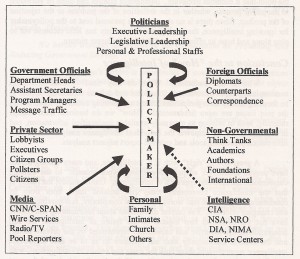
Click on Image to Enlarge
Put in the simplest possible terms, open sources of information (not decision support–decision support demands the application of the intelligence process that is not secret, not expensive, and generally not done by the US secret world) are all those sources that are open, i.e. not secret, confidential, proprietary, or otherwise encumbered that are unpublished (i.e. in human memory banks), of local provenance (“gray literature”), analog, and digital, with the latter only showing 10% or so to search engines, the rest being “deep web” (C drives, emails, local private networks, etcetera). Media, both print and digital, both niche and corporate, is certainly included. It is also the least important. On one side of media are all those with eyes on the target and ears to the ground, one fifth of them, no more, twittering away, as General Mike Flynn recently observed in relation to Uganda; and on the other are all the notes, documents, gray literature, movies, tape recordings, hand held photographs and on and on and one (CIA's Open Source Center still has no human access, just 100 T-1 lines disappearing into the ground). Here above is a depiction of the eight tribes showing the relative unimportance of intelligence as a “source” for policy makers — I use this graphic instead of one itemizing open source information types for two reasons that neither CIA nor DoD understand: OSINT is a HUMINT discipline, not a technical discipline; and everything not secret is open, and more often than not in the head — unpublished — of exactly the right person in the right place at the right time. “Knowing who knows” as Stefan Dedijer announced at OOS '92, is the acme of skill for the truly professional intelligence all-source analyst — NOT cutting and pasting from 80 secret databases full of noise. Whatever the reasons, one can only weep at the persistent lack of intelligence (an outcome) and integrity (the enabler) across the US secret world.
I will not belabor Mr. Davidson's ignorance with respect to OSINT further, and will simply point to the 30,000 pages on OSINT as an emerging discipline as produced by over 800 international practioners, none of whom, I speculate, Mr. Davidson has ever met. Together we trained over 7,500 mid-career officers from across 66+ countries [I lost my clearances to DOHA over this despite the fact that I was OPCON to J-23 at SOCOM the whole time], and wrote the OSINT handbooks for DIA, SOF, NATO, and multiple countries — handbooks I am quite certain Mr. Davidson has no idea even exist. Cf. Handbooks / OSINT Generic (17); Historic Contributions (268); Awards 1992-2006 (2); and Phi Beta Iota the Public Intelligence Blog generally (portal to both OSS and EIN content from 1988 onwards).
Mr. Davidson renders a public service in displaying so publicly the level of retardation characteristic of the CIA's over-promoted and under-educated “Senior Intelligence Service.” Whatever his accomplishments as a Russian-speaking case officer, he reminds me all too sadly of Sandra Cruzman, my former Reviewing Officer as head of the Collection Requirements and Evaluations Staff, who after reading my first truly public offering, 1992 E3i: Ethics, Ecology, Evolution, & intelligence, told Dr. Ross Stapleton-Gray “This confirms Steele's place on the lunatic fringe.” Today of course, twenty years later almost to the month, the intelligence industrial mafia organization, Intelligence and National Security Alliance (INSA, formerly SASA), is scurrying to state the obvious and missing the point completely. Their paper, “Expectations of Intelligence in the Information Age,” is well-intentioned–I particularly like the fingerprints of Cambone and Medina–but dangerously counterproductive for reasons that I outline at the separate post where both the one-page summary and the document itself can be downloaded, and my detailed review of that document examined.
Rather than dwell on the past, I will dismiss it, up to and including the INSA document, by pointing to 2004 Modern History of Public Intelligence and the Opposition and 2009 Perhaps We Should Have Shouted: A Twenty-Year Retrospective. Those who wish to actually learn something useful can read version 3.2 of “The Craft of Intelligence,” and should of course buy the book when it becomes available in six months: Robert Dover, Michael Goodman, and Claudia Hillebrand (eds.). Routledge Companion to Intelligence Studies (Oxford, UK: Routledge, 31 July 2013).
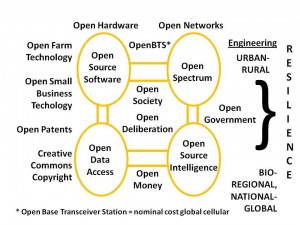
OSINT is old news for those of us that combine intelligence with integrity, but certainly something the next Secretary of Defense needs to think about, starting with 2009 DoD OSINT Leadership and Staff Briefings. The new meme is M4IS2 and the new new meme is OSE for Open Source Everything. M4IS2 is a Nordic military concept I learned from Col Jan-Inge Svensson, Multinational, Multiagency, Multidisciplinary, Multidomain Information-Sharing and Sense-Making. Although I was able to brief this concept to the Coalition Coordination Center (CCC) at CENTCOM, and later to the Multinational Intelligence Fellows Course at DIA, it never gained traction because “the system” is optimized — I use the word loosely — for unilateral top down top secret noise, not for multilateral bottom up interactive sense-making. OSE is the topic of my latest book, 2012 THE OPEN SOURCE EVERYTHING MANIFESTO: Transparency, Truth & Trust, and it makes the case for needing to go “all in” on all the opens in order to scale M4IS2 and educate / catalyze the five billion poor while uniting the eight tribes in local to global information-sharing and sense-making. It could usefully be read together with my 2010 INTELLIGENCE FOR EARTH: Clarity, Diversity, Integrity, & Sustainability. Nothing any US secret agency head is doing now — and I include General Mike Flynn for whom I would be glad to work but evidently my two letters to him were intercepted and destroyed — is going to make a near or mid term difference in US Government priorities, policies, acquisition, or operations. “The system” is on auto pilot, no one is held accountable for failure, and by the time deep failure is understood (everything that failed under Mike Hayden, at both NSA and CIA, to take one noteworthy example) the individual is retired, on the lecture circuit, and his replacements are content to let sleeping dogs lie (pun intended). DoD principals interested in getting this right can begin with one email. Have brain, will travel.
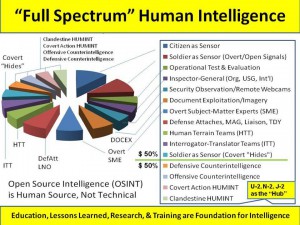
I have put in one place all relevant information including graphics with respect to an Open Source Agency such as was called for in 1969 with the pages of CIA's own Studies in Intelligence, and championed in the 1970's by Jan Herring, then National Intelligence Officer for Science & Technology, George Marling of the Intelligence Producer's Council (IPC), and the joint civilian-military science & technology committees and working groups. Since 1988 I have been the primary proponent for OSINT around the world — embracing the proponents of sub-elements of OSINT such as Gray Literature and virtual (human) working groups — and today I am the primary proponent for M4IS2 and OSE, both inherently about connecting humans and accessing the 80-90% of the needed knowledge in real time that is NOT digital, NOT in English, and NOT accessible to CIA or anyone else in Washington, D.C. I am also the primary proponent for “full-spectrum HUMINT,” a term that I coined, and that in my judgment the center of gravity for the future of US and UN intelligence (decision-support). Technology has failed because integrity has been absent. We have to start over with an M4IS2/OSE approach, and only when that is in place as a baseline, can we then begin to think about unilateral deep secrecy in any form. Of course I have developed ideas about clandestine and covert operations and offensive and defensive counterintelligence, ideas that could begin to show results within 180 days if not sooner, but that aspect of my thinking is reserved for whoever wants to adjudicate me back into the system. With an OPM SSBI completed 15 March 2012, I am immediately adjudicatable.
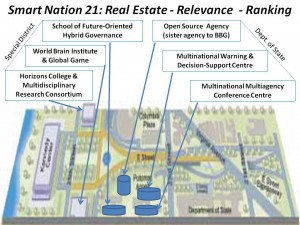
There is one thing and one thing only that will save the US secret intelligence community in these early years of the 21st Century, and frankly I do not expect to see this occur: the next Secretary of Defense must explicitly acknowledge that the truth at any cost lowers all other costs, and that absent whole system holistic analytics based on true cost economics and total transparency in Whole of Government establishment of priorities, policies, acquisition, and operations, the US secret world will remain the poop chute on the ship of state, a minor piece of plumbing full of crap, with no bearing on the direction of the government and the Republic. Clearing the South-Central Campus and creating the Open Source Agency as well as the University of the Republic there, while prevailing on the Saudis and the JFK Center to raise the money to create the long-desired Potomac Plaza Park over the mess of roads now cutting them off from the city and the city from the river, would be an excellent place to start the cleansing of the temple of misplaced secrecy lacking in both intelligence and integrity.
I knew 80% of all this in 1992, along with Tom Pedtke, Andy Shepard, Diane Webb, Kathy Lavigne, and a handful of others. We have wasted 20 years. Must we waste the next five? The next ten? The next twenty? St.
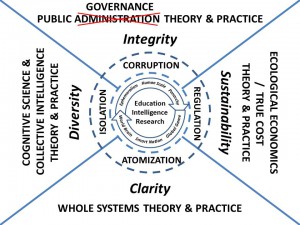
See Also:
21st Century Intelligence Core References 2007-2013
1992-2012 CIA Still Does Not “Get” Open Source
2010: Human Intelligence (HUMINT) Trilogy Updated
2005 Steele to Hayden Asking for Naquin Cease & Desist
1992 AIJ Fall ‘New Paradigm” and Avoiding Future Failures
1992 AIJ OSS Steele’s Original Vision
1992: USMC Critique of CIA/FBIS Plan for Open Source Intelligence (OSINT)
Books on Intelligence & Information Operations by Robert David STEELE Vivas et al
DCI Preparing US Intelligence for the Information Age (STIC 93-001, January 1993)
Graphic: Human Intelligence (HUMINT) J-2 Central
Journal: Reflections on Integrity UPDATED + Integrity RECAP
Photographs: Robert David STEELE Vivas at 60
Review: No More Secrets – Open Source Information and the Reshaping of U.S. Intelligence
Search: M4IS2 [as of 20121013]
Search: osint [as of 21 Oct 2012]
Who’s Who in Collective Intelligence: Robert David STEELE Vivas
NEW EXCHANGE 2 December 2012

WRIGHT UPDATE: My ongoing exchange with Davidson among others was predicated on a quote from Phi Beta by a third party who started the discussion. Davidson and one other so far have simply joined in the discussion to express their disdain for the concept of OSINT.
This disdain is based on a complete misunderstanding of what OSINT is and how it works. The prevailing thought by Davidson and one other resfusnik, who both of have experience in the secret world, is that OSINT means random collection of everything all the time primarily from the Internet. This appears to be a major obstacle to accepting OSINT by folks who know little about it.
STEELE COMMENT: I have known all along that CIA has done nothing to change how OSINT and HUMINT and OSINT and all-source analytics interact from origin of requirement to feedback on finished products. In 1997 the Director of the National Intelligence Agency (NIA) in South Africa not only “got it,” he lectured the entire middle management of the national community on how he wanted the disciplines to interact as a “DNA spiral” (his original words) and he had me spend a half day with each of the disciplines including national counter-intelligence, and a half day with the South African National Security Council.. The Open Source Center (OSC) has been a false trail and set us back twenty years while also destroyed what was once a superb FBIS.
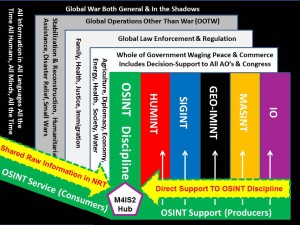
My plan for the first 99 days of the OSA is a matter of record, I have always planned on education by doing, showing individual collection managers, analytic branch heads, and specific consumers early on what they could do with the full power of OSINT in their support, this exchange reminds me again of how little the USG has learned in twenty years, and how much hard work lies ahead if we ever get leadership capable of doing the right thing instead of the wrong thing righter over and over again. I've known all along the policy makers would have to be educated, my plan there is also action based — providing them with superlative OSINT while providing copies to their Congressional jurisdictions, the media, and their constituents. Among the many differences between open and secret decision-support is that the open decision-support cannot be ignored. St.






